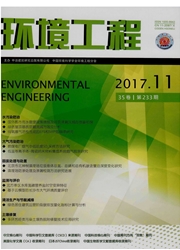

 中文摘要:
中文摘要:
港口污染物的排放浓度极大地影响着周边的空气质量,以2013年3月28日香港国际集装箱码头发生的罢工事件为契机来探究港口运作短暂的瘫痪对周边空气质量的影响。首先,进行污染物之间的相关性分析确定影响本次罢工事件的污染物主要为NO2、NOx、SO2以及O3。其次,基于罢工前、罢工期间以及罢工后污染物排放的浓度变化,进行横向对比发现罢工期间的污染物确实有一定程度的减少。再次,利用纵向对比排除四季带来的影响探究不同年份同一阶段污染物浓度的变化情况评估罢工期间的空气质量。最后,以NO2为例建立预测模型对罢工期间的NO2浓度进行预测,根据实际值与预测值之间的差异来说明罢工影响了NO2的预测趋势。这项研究主要强调港口空气质量对整个环境的影响,在一定程度上说明政府实施政策的有效性,为政府提供了决策支持,同时也要注重污染物之间的相互转化作用对环境的影响。
 英文摘要:
英文摘要:
The emission concentration of pollutants from port greatly affects the ambient air quality. This paper evaluated the impact on air quality during the port paralysis,which took place in Hong Kong international container in March 28 th,2013.Firstly,the correlation analysis between pollutants determined that pollutants influenced by the strike mainly were NO2,NOx,O3,SO2. Secondly,based on the pollutants concentration before,during and after the strike,the pollutant emission didn' t have a certain degree of reduction during the strike through horizontal comparison. Thirdly,excluding the impact brought by the seasons,the longitudinal comparison assessed the air quality during the strike in different years but the same phase.Finally,taking NO2 as an example,establishing forecasting model predicted the concentration of NO2 during the strike. The differences between the actual value and predicted value affected the trend of NO2. This study mainly emphasized the influence of port air quality on the environment,offered decision support for the government to implement the policy to a certain extent,and focused on the impact of interactions between pollutants into the environment.
 同期刊论文项目
同期刊论文项目
 同项目期刊论文
同项目期刊论文
 期刊信息
期刊信息
